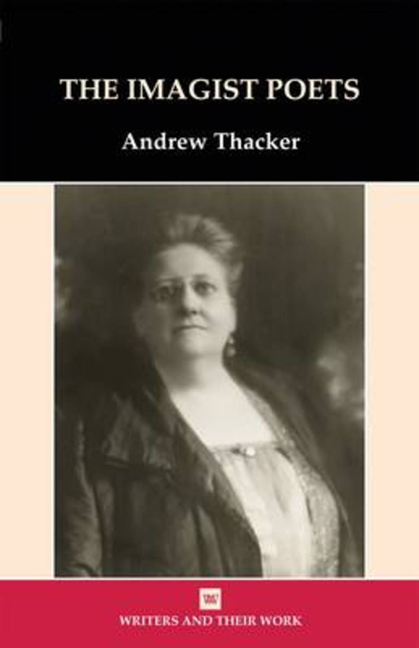Book contents
- Frontmatter
- Dedication
- Contents
- Acknowledgements
- Biographical Outlines
- Abbreviations
- Introduction: The Formation of Imagism
- 1 Movements and Modernism
- 2 Publishing, Publicity, and Magazines
- 3 Prefaces and Manifestos
- 4 Modern Themes
- 5 Urban Images
- 6 Gender and Sexuality: ‘Amygism’ and ‘H.D. Imagiste’
- Afterword
- Notes
- Select Bibliography
- Index
1 - Movements and Modernism
- Frontmatter
- Dedication
- Contents
- Acknowledgements
- Biographical Outlines
- Abbreviations
- Introduction: The Formation of Imagism
- 1 Movements and Modernism
- 2 Publishing, Publicity, and Magazines
- 3 Prefaces and Manifestos
- 4 Modern Themes
- 5 Urban Images
- 6 Gender and Sexuality: ‘Amygism’ and ‘H.D. Imagiste’
- Afterword
- Notes
- Select Bibliography
- Index
Summary
The founding of the Imagist movement has been discussed many times and, not surprisingly, has engendered different recollections by the central protagonists. The primai scene of the founding seems to have been the 1912 meeting in a teashop in Kensington, London (or possibly a café in or near the British Museum), between Pound, Aldington and H.D. Pound praised a sheaf of new poems by H.D. and wrote, ‘H.D. Imagiste’ at the bottom of the manuscript. Aldington and H.D., by all accounts, seemed rather puzzled by this term, but were willing to collude with the new movement, particularly as Pound could get their work published in the new American magazine Poetry and, noted Aldington, ‘nobody else at that time would look at them’. According to F. S. Flint, Pound derived the name by combining T. E. Hulme's idea of the ‘image’ (itself originating in the philosopher Bergson) and an article by Flint in The Poetry Review where he discussed various groups in contemporary French poetry. Aside from French models of literary ‘movements’, the idea of a group of poets publishing in a collective manifestation had several precursors in London at this time. One example known to Pound through his friendship with Yeats would have been the Rhymers’ Club who met to read and discuss poetry at Ye Olde Cheshire Cheese pub in Fleet Street, London, in the 1890s and who published two anthologies of poetry as The Book of the Rhymers’ Club. A more immediate link to the Imagists was the Poets’ Club, which met in a relatively formal setting in London's Mayfair, with Hulme as its honorary secretary, and whose 1908 volume of poems was reviewed by Flint. Hulme and Flint then led a breakaway faction from this earlier group and decided to meet more informally. This group met on Thursday evenings from March 1909 onwards at the Tour Eiffel restaurant, off Tottenham Court Road and its members included Hulme, Desmond Fitzgerald, Flint, Edward Storer, Florence Farr, Francis Tancred, and Joseph Campbell. Pound first attended on 22 April 1909. The members read and corrected each othehs verse, discussed vers libre and the idea of adapting Japanese and Hebrew forms for the composition of English poetry. Pound wrote that the Imagists were descended from this ‘forgotten school of 1909’, a group he described as the ‘School of Images’.
- Type
- Chapter
- Information
- The Imagist Poets , pp. 10 - 23Publisher: Liverpool University PressPrint publication year: 2011



